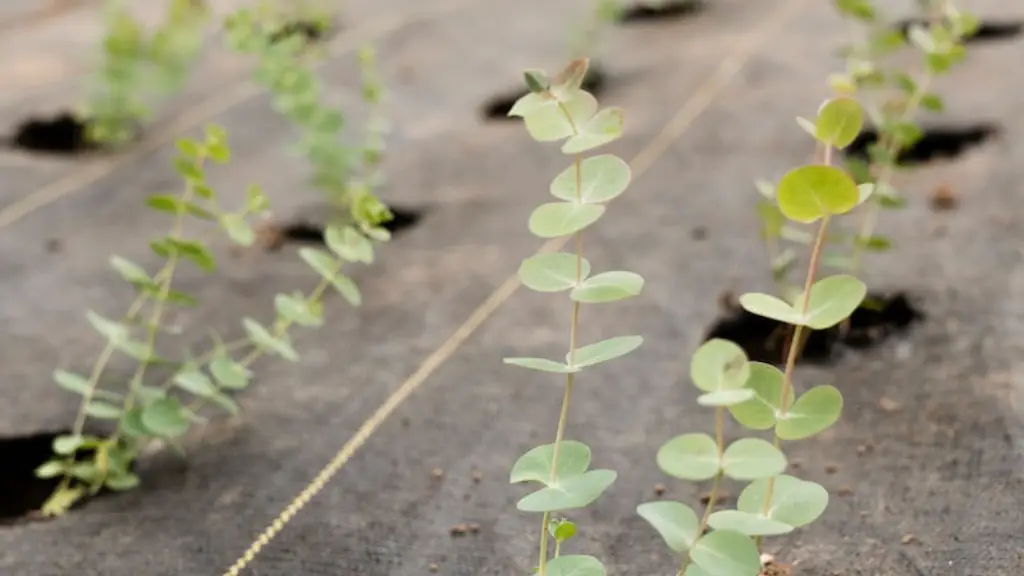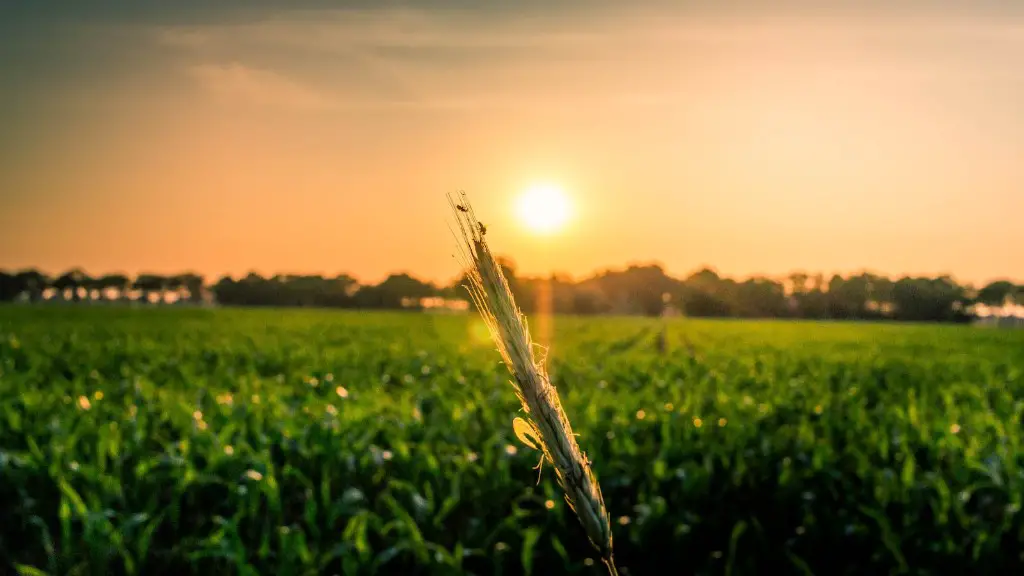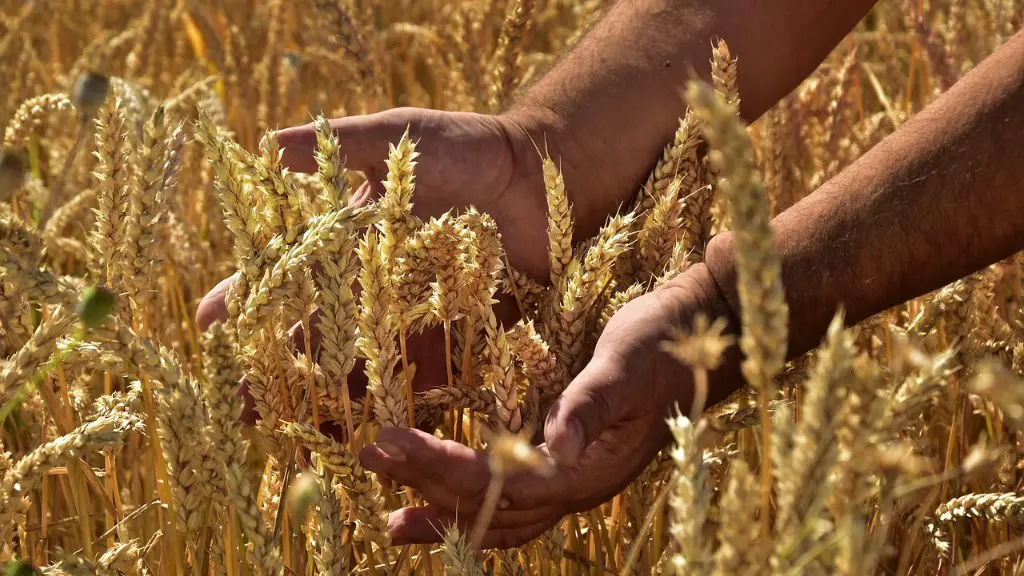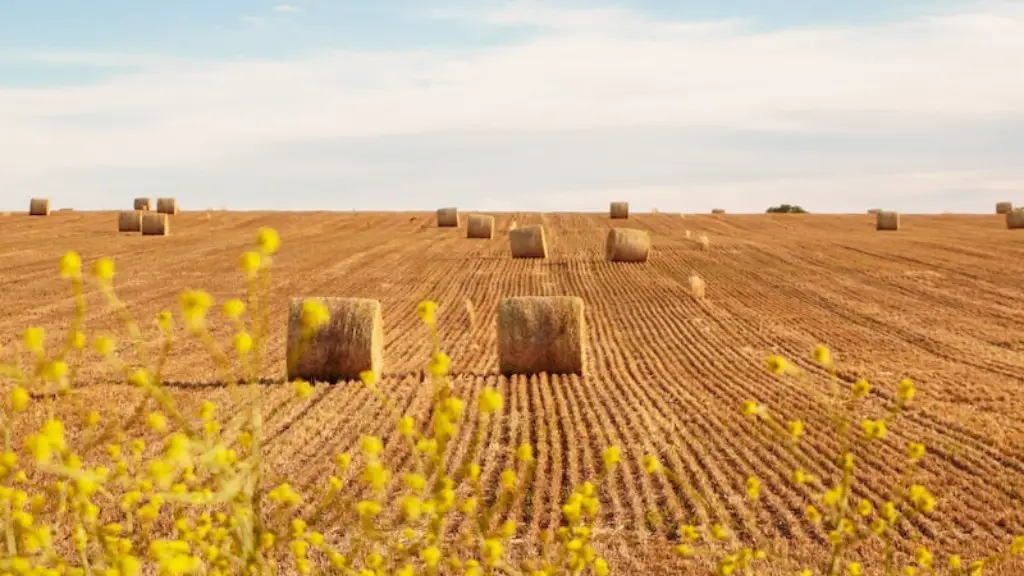The Agricultural Revolution was a period of rapid agricultural development between the 18th century and the end of the 19th century. This period saw a massive increase in agricultural productivity and efficiency thanks to new advances in technology and husbandry. The Agricultural Revolution made it possible for unprecedented numbers of people to be fed, resulting in population growth and economic development. Today, the challenge is to modernize agriculture so that it can continue to meet the needs of a growing global population. There are a number of ways to achieve this, including improving agricultural education, investing in research and development, and increasing access to financial services.
One way that agriculture can be modernized is by using new technology to improve efficiency and productivity. This can include using precision agriculture techniques, which use sensors and mapping technologies to help farmers more accurately target their planting, fertilizing, and watering. It can also include using genetically modified crops, which have been modified to be more resistant to pests and diseases or to produce higher yields. Another way to modernize agriculture is to provide incentives for farmers to adopt more environmentally sustainable practices. This can include financial incentives, such as tax breaks or subsidies, for farmers who use less water orwho implement soil conservation practices. It can also include educational programs to help farmers learn about and adopt new technologies and practices.
What helps in Modernising agriculture?
The manufacturing industries help in modernizing agriculture. They provide the latest machinery and equipment to farmers which help them increase their productivity. Apart from this, manufacturing industries also reduce the heavy dependence of people on agricultural income. They provide alternative employment opportunities to people living in rural areas. Export of manufactured goods expands trade and commerce and brings in much needed foreign exchange.
Agricultural modernization has the potential to transform the agricultural sector into one that is more efficient and productive. However, it is important that this process is guided by the principles of social justice, in order to ensure that the benefits of agricultural modernization are evenly distributed.
How can we commercialize and modernize agriculture
Modernization of agriculture is necessary in order to meet the increasing demand for food. Traditional methods of production cannot keep up with the demand, so new methods and technology must be used. This includes the use of improved seeds and chemical fertilizers, as well as better irrigation facilities. Markets must also be developed in order to sell the produce.
Agricultural modernization is critical for economic transformation and achieving food security and improved nutrition. In order to make agricultural transformation a reality, there are two key areas that need to be addressed:
1. Increase agricultural productivity: This can be done through the use of technology, improved farming practices, and better access to inputs.
2. Improve market access and linkages: This includes developing infrastructure, such as storage and transportation facilities, and increasing market access for farmers, especially smallholders. It also includes creating better linkages between farmers and buyers, such as through agri-businesses and farmer cooperatives.
What are the three modern agricultural techniques?
The use of farm machinery can help improve the quality of work as well as reduce time consumption. The use of chemical fertilizers and pesticides can ensure the farmers about the better upbringing of crops in quality and quantity.
Modern farming methods in India have led to the development of new techniques such as aeroponics and hydroponics. These methods of farming use less soil and do not require any form of soil. Monoculture is another modern farming method that is practiced in India. This method involves growing a single crop in a given area.
What are the modern trends in agriculture?
Automation in farming has been around for centuries, but it has only been in the past few decades that precision farming has become more prevalent. Automation, including the use of robots, drones, and autonomous tractors, can help farmers be more efficient in their work. Precision farming, which involves applying irrigation, fertilizers, and pesticides at variable rates, depending on the needs of crops, can help reduce the amount of chemicals used and increase crop yields.
Modern agriculture encompasses a wide range of farming practices and products. It can include everything from large-scale, commercial farms to small, family-run operations. Organic and sustainable agriculture are two of the most popular sub-types of modern agriculture.
Agribusiness is a term that covers the entire food production system, from farming and processing to marketing and distribution. Intensive farming is a type of agriculture that seeks to maximize yield by using a variety of techniques, including monoculture, irrigation, and heavy use of pesticides and fertilizers.
Precision agriculture is a type of farming that uses sophisticated technology to manage crops and other resources. This can include things like GPS-guided machinery, weather monitoring, and yield mapping.
Sustainable agriculture is a type of agriculture that seeks to protect and improve the natural resources that farmers rely on. This can include things like using cover crops to improve soil health, rotating crops to reduce pest pressure, and using organic fertilizers.
What are 4 ways to improve the agriculture
Mark Jones is an agricultural economist and the author of “The Food Revolution: How Your Diet Can Help Save Your Life and Our World.” He argues that we need to adopt more efficient and sustainable methods of food production in order to feed the world’s growing population. To do this, he recommends several measures, including the development of high-yield crops, the use of more irrigation, the adoption of GM crops, and the reform of land ownership.
To determine the development needs of a particular country, it is important to look at how much agricultural land is available, how fertile it is, and birth rates. Price policies also play a key role in agricultural transformation. Public investment in research, extension services, electricity and irrigation is also important.
What is the latest technology for modern agriculture?
There are many different types of software and data that can be used in agriculture. Some of the most popular types of software include GIS software, GPS agriculture software, and farming software. Satellite imagery, drone imagery, and other aerial imagery can also be very useful for farmers. Online data can also be very helpful for farmers, as it can provide information on weather, soil conditions, and more.
GPS technology is widely used in precision farming. It helps in locating the field boundaries and applying fertilizers, pesticides, and herbicides accurately. This reduces wastage and increases efficiency.
Where Is modern technology used in agriculture
There is no doubt that technology has played a vital role in the agricultural sector. It has helped farmers in different aspects of agriculture such as the application of herbicide, pesticide, fertilizer, and improved seed. Over the years, technology has proved to be extremely useful in the agricultural sector and has helped farmers increase their productivity and efficiency.
Agriculture is a major contributor to many of the environmental issues that are causing environmental degradation. These include climate change, deforestation, biodiversity loss, dead zones, genetic engineering, irrigation problems, pollutants, soil degradation, and waste.
Agriculture is one of the main sources of greenhouse gas emissions, which are a major cause of climate change. Deforestation, which is often caused by agriculture, leads to loss of habitats and biodiversity. agricultural runoff is one of the main sources of pollution in our oceans, causing dead zones.
Genetic engineering and irrigation can cause problems with water resources and soil degradation. Pollutants from agriculture can contaminate air, water, and soil. And finally, agriculture generates a large amount of waste.
All of these environmental problems caused by agriculture are leading to environmental degradation. This is a major problem that needs to be addressed in order to protect our environment and keep our planet healthy.
What are six modern ways of farming?
Modern farming methods, techniques and technologies have revolutionized the way we grow crops and rear livestock. From ancient times till recent years, traditional methods and practices were followed in farming. But with the advancement of science and technology, new methods and techniques have been developed which are much more efficient and productive.
Some of the modern farming methods, techniques and technologies are:
1. Aeroponics System: In this system, crops are grown without the use of soil. The roots of the plants are suspended in air and are sprayed with a nutrient-rich solution. This system is very efficient in terms of water and nutrient usage, and also provides a controlled environment for the plants to grow in.
2. Aquaponics: Aquaponics is a combination of hydroponics and aquaculture. In this system, plants are grown in water that is rich in nutrients from fish waste. This method is very efficient in terms of water usage and also provides a natural source of nutrients for the plants.
3. Hydroponics: In hydroponics, crops are grown without the use of soil. The roots of the plants are Suspended in water and are sprayed with a nutrient-rich solution. This system is very efficient in terms of water
Farmers are now using technology to automate various tasks in their work. This includes using automated harvesters, drones, autonomous tractors, seeding, and weeding. This allows them to focus on more critical functions and improve their efficiency.
Conclusion
Agriculture can be modernized by adopting new technologies and approaches that can improve yields, decrease inputs costs, and help farmers adapt to climate change.
The world’s food supply is under increasing pressure as the population continues to grow. To meet this demand, agriculture must become more efficient and productive. One way to achieve this is through mechanization, which can help farmers to cultivate more land and produce more food with less labor. However, mechanization is not the only solution; other approaches such as precision agriculture, which uses modern technology to optimize crop yields, can also play a role in modernizing agriculture.





